
Arkanoid is a 1986 block breaker arcade game developed and published by Taito. In North America, it was published by Romstar. Controlling a paddle-like craft known as the Vaus, the player is tasked with clearing a formation of colorful blocks by deflecting a ball towards it without letting the ball leave the bottom edge of the playfield. Some blocks contain power-ups that have various effects, such as increasing the length of the Vaus, creating several additional balls, or equipping the Vaus with cannons. Other blocks may be indestructible or require multiple hits to break.

Rainbow Islands: The Story of Bubble Bobble 2 (レインボーアイランド) is a 1987 arcade video game developed and published by Taito, with the arcade version licensed to Romstar for North American manufacturing and distribution. The game is the sequel to Bubble Bobble from the previous year, and it is the second of four arcade games in the series. The game was ported to home computers and home video game consoles.
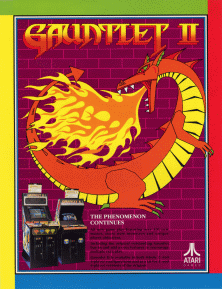
Gauntlet II is a 1986 arcade game produced by Atari Games that serves as the immediate sequel to the original Gauntlet, which was released the previous year. Like its predecessor, Gauntlet II is a fantasy-themed top down dungeon crawler game and was released as a dedicated cabinet, as well as a conversion kit, both available in 2-player and 4-player versions.

Bad Dudes Vs. DragonNinja, also known simply as either Bad Dudes or DragonNinja, is a side-scrolling cooperative beat 'em up game developed and released by Data East for arcades in 1988. It was also ported to many computer and game console home systems.
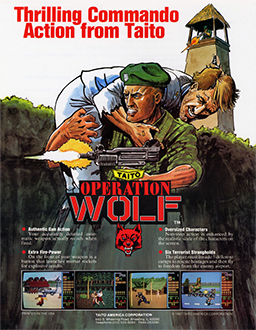
Operation Wolf is a light gun shooter arcade game developed by Taito and released in 1987. It was ported to many home systems.

Sinclair User was a magazine dedicated to the Sinclair Research range of home computers, most specifically the ZX Spectrum. Initially published by ECC Publications, and later EMAP, it was published in the UK between 1982 and 1993, and was the longest running Sinclair-based magazine. The magazine contained news, game reviews, previews, tips, help guides, columns, readers' letters, and cover-mounted game demos.

Edd the Duck is a puppet duck which appeared on the CBBC interstitial programme The Broom Cupboard alongside presenters Andy Crane and Andi Peters.
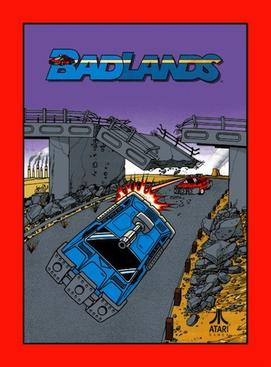
Badlands is a 1989 arcade video game published by Atari Games. It was ported by Domark under the Tengen label to the Amiga, Amstrad CPC, Atari ST, Commodore 64, and ZX Spectrum. The game is a re-themed version of Atari's previous racing games Super Sprint and Championship Sprint with the addition of vehicular combat. Badlands is set in the aftermath of a nuclear war and races around abandoned wastelands with many hazards. Three gun-equipped cars race around a track to win prizes.

Forgotten Worlds, titled Lost Worlds in Japan, is a side-scrolling shooter video game by Capcom, originally released as a coin-operated arcade game in 1988. It is notable for being the first title released by Capcom for their CP System arcade game hardware.

Kikstart 2 is a motorcycle trials racing videogame released for the Amiga, Amstrad CPC, Commodore 64 and ZX Spectrum. It enjoyed more success than its predecessor, Kikstart. The game allowed 2-player simultaneous or 1-player, vs-computer play.
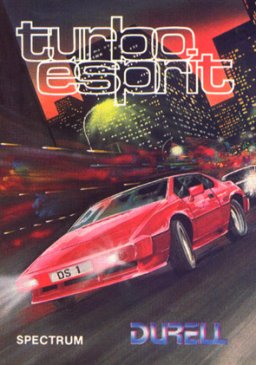
Turbo Esprit is a video game published by Durell Software in 1986 for the ZX Spectrum, Commodore 64, and Amstrad CPC. The game was very detailed and advanced for its time, featuring car indicator lights, pedestrians, traffic lights, and a view of the car's interior controls. Turbo Esprit was the first free-roaming driving game, and has been cited as a major influence on the later Grand Theft Auto series.

Silkworm is a horizontally scrolling shooter developed by Tecmo and first released for arcades in 1988. In 1989 it was ported to the Amiga, Atari ST, Commodore 64, ZX Spectrum, Amstrad CPC and NES (1990) systems by The Sales Curve and released by Virgin Mastertronic.

Buggy Boy, known as Speed Buggy in North America, is an off-road racing game developed by Tatsumi and released for arcades in 1985. The cockpit version of the arcade cabinet has a panoramic three-screen display, a feature previously employed in TX-1, but with Buggy Boy having a larger cabinet. An upright, single-screen cabinet was released in 1986 under the name Buggy Boy Junior.
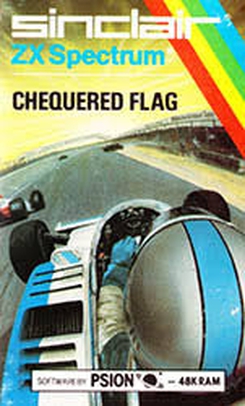
Chequered Flag is a racing video game developed by Psion Software and published by Sinclair Research in 1983. It was the first driving game published for the ZX Spectrum and one of the first computer car simulators.
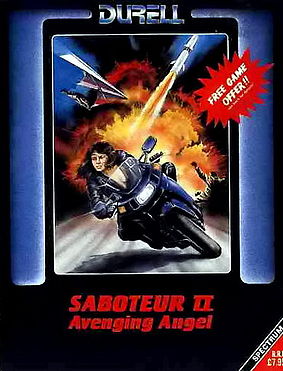
Saboteur II: Avenging Angel, also known as Saboteur 2, is an action-adventure game created by Clive Townsend and released by Durell Software in 1987 for the ZX Spectrum, Amstrad CPC, Commodore 64, and MS-DOS compatible operating systems. A sequel to 1985's Saboteur, the player controls a sister of Ninja from the first game on a mission to avenge his death. Saboteur II was one of the first action-adventure games with a female protagonist and was well received by critics.

Space Gun is a 1990 first-person shooter arcade game released by Taito. The game is set aboard a crippled space station that has been overrun by hostile alien creatures. The objective is to rescue human crew members while destroying the alien creatures. The game lets the player shoot limbs off the creatures, resulting in blood splatters.

HotShot is a Breakout style video game published in 1988 for Amiga, Amstrad CPC, Atari ST, Commodore 64, and ZX Spectrum, as well as MS-DOS compatible operating systems.

Batman is an action video game developed and published by Ocean Software based on the 1989 film of the same name. It was released on 11 September 1989 for the Commodore 64 and ZX Spectrum with Amiga, Amstrad CPC, Atari ST, MS-DOS and MSX versions following soon after.

Monty Python's Flying Circus: The Computer Game is a 1990 scrolling shoot 'em up video game developed by Core Design. It was released by Virgin Games the Amiga, Commodore 64, Amstrad CPC, and the ZX Spectrum. It is loosely based on material and characters from the 1970s British comedy series Monty Python's Flying Circus, in particular the Gumby character.
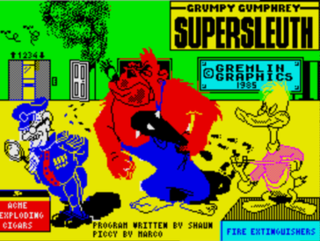
Grumpy Gumphrey Supersleuth, often known simply as Super Sleuth, is a computer game for the ZX Spectrum by Gremlin Graphics, a software developer based in Sheffield, United Kingdom. It is an action-adventure game: the player controls Grumpy, a store detective and general dogsbody working in a large department store. The game was developed by Shaun Hollingworth with loading-screen graphics by Marco Duroe.




















